11 Best Git & GitHub Courses for 2025
Build your online portfolio and enhance team collaboration with the leading version control system.
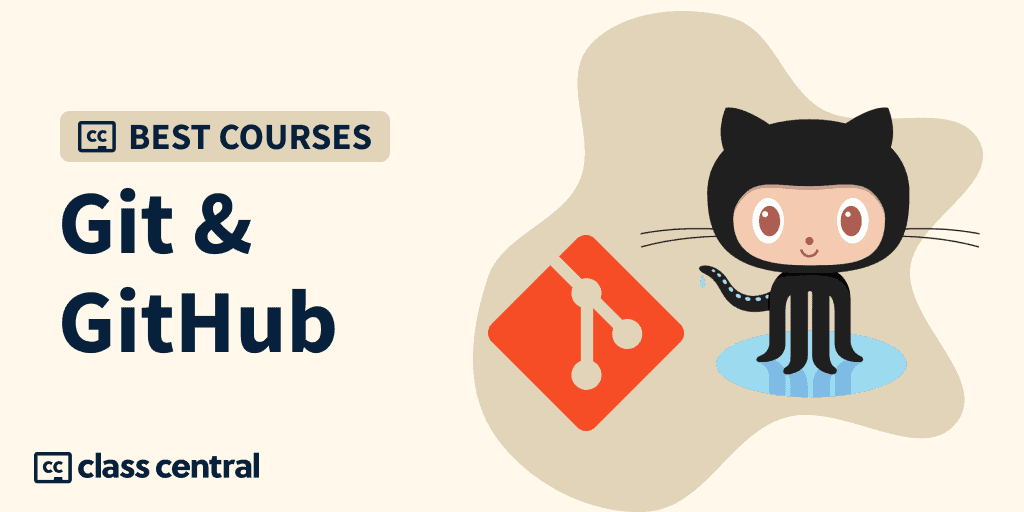
“Where did this bug come from?”, “Which commit?”, and “How do I revert to a previous version?” are common occurrences among developers. Mistakenly overwriting the main branch can be a nightmare. Git and GitHub address these issues head-on, offering a solution for version control and team collaboration.
But where does a beginner start, and how can an experienced developer maximize their potential? This Best Courses Guides (BCG) has a selection of the 10 best Git & GitHub courses, for both beginners and advanced users, ensuring you can manage your projects more effectively.
Click on the shortcuts for more details:
- Top Picks
- What are Git & GitHub?
- BCG Stats
- Why You Should Trust Us
- How We Made Our Picks and Tested Them
Here are our top picks
What are Git & GitHub?
Git is a version control system invented by the creator of Linux, Linus Torvalds, to solve one problem: allow thousands of open-source contributors from around the world to collaborate on making Linux a better operating system. Since then, Git has been widely adopted by open-source and proprietary developers alike due to its ease in managing team files while minimizing headaches.
But what is a version control system? If you have ever written on Word or Google Docs, you would rest easy knowing that any changes made in the document can easily be reverted if there was any problem with the new script. Now take that concept to the extreme and apply it to code. Now, multiple developers can work on the same script without worrying that one script might override others. In fact, they can even compare the changes made between each script, approve or reject changes, and a lot more!
So what does Git have to do with GitHub? GitHub is a highly popular Git-based hosted version control platform. No need to send files or share pendrives — upload it to GitHub instead and share it with whoever you like, so people can contribute to your project or just release it to the world to use.
It is essentially a must for any developer, from software engineers to data scientists, to learn the fundamentals of Git and GitHub. This is because every developer will eventually have to work with other developers, and Git/GitHub is the most popular and efficient medium for doing so. In fact, when you apply to software-related jobs, employers often expect you to provide links to your GitHub profile on your resumé.
Although Git is often used by programmers, it is not limited to coding only. They are useful in any project that requires tracking changes and working together as a team, like in developing course content, technical documentation, or even cooking recipes. Hence, learning Git will enhance your career prospects.
BCG Stats
- The highest enrolled course in this ranking has 293K enrollments
- All together, the courses account for over 850K enrollments
- 6 courses are free or free-to-audit while 5 are paid or subscription-based
- All of the courses in this ranking are suitable for beginners
Best Overall: Intro to Git and GitHub (Google)
If you want to learn in-depth about both Git and GitHub, Introduction to Git and GitHub by Google will score both goals!
In this free-to-audit course, you’ll learn how to use Git to keep a history of your code changes. The course walks you through both the basic and more advanced features, like branches and merging. You’ll also learn how to set up a GitHub account to create and set up your own remote repositories to store your code and collaborate with fellow developers. By the end of the course, you’ll be ready to start building your own GitHub portfolio.
All you need to take this course is basic knowledge of Python syntax, data structures, and objects. The course uses Linux, but you can follow along on Windows or MacOS.
In this course, you’ll also learn:
- Basic Git concepts and workflows
- Advanced Git commands, undoing changes, and the complexities of branching and merging
- Remote repositories, focusing on GitHub for pulling, pushing, and resolving conflicts with remote data
- Collaborative tools through GitHub, such as pull requests, code reviews, and advanced tools like issue trackers and continuous integration services.
Graded assessments are only accessible to paying learners. For your practical exercises, you’ll connect to virtual machines running in the cloud and experience the work of an IT specialist through Google Cloud Skills Boost (formerly Quiklabs), Google’s online lab-learning environment.
| Institution | |
| Provider | Coursera |
| Part of | Google IT Automation with Python Specialization |
| Level | Beginner |
| Workload | 16 hours |
| Enrollments | 293K |
| Rating | 4.8 / 5.0 (7.6K) |
| Certificate | Paid |
Best Git Course for Understanding Version Control Fundamentals (Boot.dev)
Learn Git transforms version control learning into an engaging, game-like experience through 75 bite-sized challenges and achievement unlocks. Unlike traditional Git courses that only teach basic commands, this interactive platform keeps you motivated with a steady progression system as you explore both everyday Git operations and the internal mechanisms that power them.
What makes this course stand out is its approach to demystifying Git’s complexities. Each concept is broken down into manageable challenges where you earn XP and unlock new content as you progress. You’ll get immediate feedback on your commands, support from an AI assistant named Boots, and help from an active Discord community of developers.
You’ll learn not just how to use Git commands, but understand the underlying systems that make version control work, transforming you from a developer who “adds, commits, and prays” to one who truly understands their tools.
What You’ll Learn:
- Core Git operations and repository management
- Internal Git mechanisms and plumbing commands
- Advanced branching strategies and workflow patterns
- Different integration approaches with merge and rebase
- Remote repository management with GitHub
- Professional Git configuration and ignore patterns
If you find yourself struggling and need more guidance, ThePrimeagen has a detailed 4-hour video walkthrough of the lessons:
This course is part of Boot.dev’s back-end developer certification path, giving you access to a structured learning path with 23+ courses and projects when you subscribe.
| Institution | Boot.dev |
| Provider | Direct |
| Instructors | ThePrimeagen |
| Level | Intermediate |
| Workload | 8 hours |
| Enrollments | 16K |
| Certificate | Available |
Best Front-End Tools & Portfolio Course with Live Sessions (Noble Desktop)
If you prefer instructor-led learning, Noble Desktop’s Front-End Tools & Portfolio offers real-time feedback and accountability that pre-recorded courses can’t match.
What I find interesting is that this program runs both in-person (NYC campus) and online (Zoom). Even if you’re attending online, you’ll have individual attention and can see other students in the classroom. You’ll be able to interact with instructors, receive feedback, and ask questions during sessions. Plus, you’ll get access to class recordings and workbooks – pretty helpful for catching up if you miss a class or reviewing what you learned.
Key Benefits
- Small class sizes (8-15 students)
- Certificate of completion to showcase achievements
- Free retake within one year
- Detailed class files with real-world projects
- Can upgrade to the Front End Web Development Certificate or Full Stack Web Development Certificate
Noble Desktop knows what they’re doing – they’ve been around for over three decades providing instruction with industry experts. So you can rest assured your mentorship will not be with someone who just finished the course. Don’t take my word for it – student reviews on Yelp and Google praise their practical approach and instructor quality.
What You’ll Learn
- Transform designs into fully coded websites with guidance from an expert developer
- Git and GitHub to track code changes and manage version control
- Build a portfolio project from scratch to gain valuable coding experience
- Git commands, including initializing repositories, staging, committing files, and resolving merge conflicts
- Use GitHub to push, pull, and clone repositories for project management
- Git branches, including creating, switching, merging, and deleting them
- Visual Studio Code tips and Emmet shortcuts for faster HTML and CSS development
- Practical coding skills through guided exercises and real-world projects
Schedule Options
2 weeks full-time (weekdays)
“Noble Desktop is a great place to learn coding. So far, I’ve really enjoyed the courses and would definitely refer folks to enroll.” – Jesse Daniels
| Institution | Noble Desktop |
| Provider | Direct (NYC campus or Live Online) |
| Instructors | Brian McClain, Dan Rodney |
| Level | Beginner to Intermediate |
| Workload | 18 hours |
| Rating | 4.8/5.0 (Yelp) and 5.0/5.0 (Google) |
| Certificate | Certificate of Completion |
Best Git Essentials Course (Udacity)
You’ll master the Git workflow by learning all the essentials of version control in Version Control with Git by Udacity.
The free course starts with an introduction to version control and why we need it. Then, it goes over creating Git repositories, maintaining one, and adding changes to it. You’ll learn how to organize your changes with tagging, branching, and merging. Lastly, you’ll cover your rear from 3 am mistakes by reverting and deleting commits.
Although experience with the command line is beneficial, it is not required. There are no other prerequisites to this course.
In this course, you will learn:
- What version control really is – a method for managing different versions of source code
- Git installation, basic terminology, and repository creation
- How to make and verify commits along with writing descriptive commit messages
- View a repository’s commit history and use command line flags to customize this output
- Advanced Git features: tagging, branching, and merging, emphasizing productivity and problem prevention in project development
- How to undo, modify, and erase changes in a repository to recover from unexpected issues in the codebase.
This course is four weeks long and consists of 6 lessons. You’ll learn from the video lectures and detailed articles. There are also plenty of practice quizzes and hands-on exercises.
Richard Kalehoff is a Software Engineer at Udacity with over 10 years of experience in creating web applications.
| Institution | Udacity |
| Instructor | Richard Kalehoff |
| Level | Beginner |
| Workload | 4 weeks long, 2-3 hours per week |
| Certificate | None |
Best Git Course for Linux Users (Linux Foundation)
Did you know that Git was created specifically to keep up with the development of Linux?
From the originators of Git, the Linux Foundation, Git for Distributed Software Development teaches you everything you need to know about Git to be able to contribute to open source projects in a relatively short amount of time. If you have little to no experience working in collaborative development environments or want to get a good foundation of Git, this course is for you.
You can have free access to this course for 10 weeks after signing up.
By the end, you’ll understand how collaborative development and its various workflows contribute to team productivity and have the tools needed to solve complex problems when issues inevitably arise during collaboration.
You’ll need a Linux system to follow along the examples in the course. Experience with using the command line is helpful but not necessary.
In this course, you will learn:
- The evolution of revision control systems and then focuses on Git’s advanced features and its history as a distributed development project
- Basic Git operations: file and repository management, creating commits and branches, and comparing code changes between commits
- The concept and practice of merging in Git, including resolving conflicts before completing merges
- Rebasing is introduced as an alternative to merging, where changes are reapplied on top of the main branch for a cleaner history
- Advanced topics: Git’s role in distributed development, cloning repositories, and the push/pull workflow for remote repositories
- The use of patches for code changes via email and Gerrit, a tool that enhances Git’s functionality for massive open-source projects.
Each unit comes with an ungraded lab as well as a graded test. Graded tests are only available to paying students.
Jerry Cooperstein has been working with Linux since 1994, developing and delivering training in both the kernel and user space. He worked in the field of nuclear astrophysics for two decades where he developed state-of-the-art simulation software on many kinds of supercomputers.
| Institution | Linux Foundation |
| Provider | edX |
| Part of | Open Source Software Development, Linux and Git Professional Certificate |
| Instructor | Jerry Cooperstein |
| Level | Beginner |
| Workload | 14—28 hours |
| Enrollments | 6.5K |
| Certificate | Paid |
Best Git Course Without Command Line (Atlassian)
If you’re not too familiar with using command lines, this course can teach you how to use an alternative.
Version Control with Git by Atlassian helps you build up a strong conceptual understanding of the Git version control system through heavy hands-on practice. It is for those who have no previous experience with Git or those who have just enough Git to be dangerous.
One unique feature of this course is that it has two paths. The first path assumes you have experience with using a command line interface while the other uses a Sourcetree graphical client. You can choose whichever path you like, or both!
A side note, this course uses Bitbucket as the hosted provider for remote Git repositories. As you’ll learn more about Git than Bitbucket, you can easily apply what you’ve learnt in GitHub or other hosted Git providers.
In this course, you will learn:
- Intro to Git: its critical role in DevOps and modern software development, enabling continuous improvement and version management
- How Git helps manage and merge multiple versions of a product, tracking changes and identifying conflicts
- Basic Git commands and features, including creating local repositories and making commits
- Git graph model to visualize how different versions are interconnected
- A detailed examination of branching and merging, along with strategies for resolving merge conflicts
- Key commands for repository interaction: clone, fetch, push, and pull, as well as rebasing and rewriting history for maintaining a clean project timeline
- How teams of different sizes utilize Git, covering pull requests and various workflow strategies like centralized, feature branch, forking, and Gitflow.
The course provides plenty of hands-on experience: Labs where you’ll carry out the instructions and practice using Git and peer-graded assignments where you’ll simulate fixing a bug using the Gitflow workflow. Paid learners will have access to graded weekly assessments.
Atlassian offers a wide course catalog in their Atlassian University. They offer fundamentals courses for free with hands-on training and certification. Steve Byrnes has another course called Agile with Atlassian Jira on Coursera.
| Organization | Atlassian |
| Provider | Coursera |
| Instructor | Steve Byrnes |
| Level | Beginner |
| Workload | 13 hours |
| Enrollments | 125.6K |
| Rating | 4.7 / 5.0 (2.9K) |
| Certificate | Paid |
Also Great: The Essentials of Git and GitHub (IBM)
Developed and taught by experienced IBM practitioners, Getting Started with Git and GitHub will provide you with essential conceptual and hands-on skills to work with Git and GitHub.
By the end of this course, you’ll be able to use GitHub to work effectively as a team and perform common Git operations, such as Pull Requests, from both the Web UI and command line.
There are no prerequisites.
In this course, you will learn:
- Intro to Git and GitHub, focusing on their use for collaboration and accountability in team settings
- Set up a GitHub account, create a repository, and learn to add and commit files using the web interface
- Git workflows, including working with branches, pull requests, and merges
- Practice forking and cloning public repositories, and synchronizing between local and remote repositories using pull and push commands
- Hands-on experience with Git commands in a team environment
- A final project: apply what you’ve learned.
For paying learners, each module comes with a graded hands-on lab for you to apply what you’ve learned. The final project consists of you building your portfolio by creating and sharing an open-source GitHub project.
Fun Fact: IBM has 500+ courses in Class Central’s database. Most of them are free-to-audit.
| Institution | IBM |
| Provider | Coursera |
| Instructors | Upkar Lidder and Rav Ahuja |
| Level | Beginner |
| Workload | 9 hours total |
| Enrollments | 100.9K |
| Rating | 4.6 / 5.0 (1.4K) |
| Certificate | Paid |
Hands-on Course: Learn Git & GitHub (Codecademy)
If you’d like to learn Git exclusively through hands-on coding exercises, Learn Git & GitHub by Codecademy might be worth your buck. You’ll learn how to integrate Git and GitHub into your development practice.
To take this paid course, you should be familiar with using the command line. Codecademy has a course on that.
In this course, you’ll cover:
- Intro to Git and GitHub, followed by practical exercises simulating real-life Git usage for development and team coordination
- Basic Git operations with plenty of examples and tutorials
- Create a repository on GitHub and explore features that support collaboration and integration with Git
- Best practices for GitHub, such as writing READMEs in Markdown, detailed pull requests, and utilizing .gitignore files
- Advanced GitHub features, including setting up GitHub Pages, using the GitHub CLI, and implementing automated testing.
This course gives you a hands-on coding-first approach to learning — you’ll complete multiple tasks through writing code instead of watching hours of video lectures. The course consists of multiple projects and quizzes to help you retain what you’ve learned.
If you like Codecademy’s style of teaching, they have plenty of other courses ranging from web development to data science.
| Institution | Codecademy |
| Level | Beginner |
| Workload | 15 hours total |
| Enrollments | 134.4K |
| Rating | 4.5 / 5.0 (1.8K) |
| Certificate | Paid |
Best Tutorial to Git and GitHub for VSCode (fCC)
Git and GitHub for Beginners – Crash Course does exactly what it says in the title — it gives you a short introduction to Git and GitHub from the ground up!
If you use Visual Studio Code as your main code editor, then this course is perfect for you as it teaches you how to integrate Git and GitHub into your workflow.
You do not need any prior knowledge of Git or GitHub prior to starting this course.
In this course, you will learn:
- Intro to version control and Git – facilitating collaboration on projects by managing different versions
- Basic Git commands and create a GitHub account
- How to use Git on a local machine, with a focus on using Visual Studio Code
- Git operations within Visual Studio Code: committing, adding, and pushing changes
- The concept and practice of branching as well as the differences between Git and GitHub workflows
- How to correct mistakes in Git and fork repositories on GitHub.
Gwen Faraday has a YouTube channel where she makes videos about various things from her life as a Senior Software Developer to educational courses on programming. freeCodeCamp has a Git course built into their website, currently in beta, that uses the online version of Visual Studio Code.
| Institution | freeCodeCamp |
| Provider | YouTube |
| Instructor | Gwen Faraday |
| Level | Beginner |
| Workload | 1 hour |
| Views | 4.3M |
| Likes | 95K |
| Certificate | None |
Best Short Course on Git and GitHub (LinkedIn Learning)
If you have LinkedIn Learning and you want to learn how to use Git and GitHub in a relatively short amount of time, this course will get you started — no prior requirements necessary.
Learning Git and GitHub by LinkedIn Learning teaches you the basics of working with Git commands and GitHub. By the end of the course, you’ll be equipped to deal with and navigate through GitHub projects.
In this course you will learn:
- Git fundamentals, including setting up environments and managing files (creation, deletion, ignoring)
- Commits in Git: save and document changes to files
- Branches as a means to develop alternative versions of a project without altering the original
- Merging branches with an emphasis on being cautious of merge conflicts
- GitHub: how to create and manage remote repositories
- Navigate GitHub’s interface and use commands like pull and push for project collaboration
- Learn about the social aspects of GitHub so you can get comments, opinions, and advice to help you refine your projects.
You’ll learn from the instructor’s lecture videos and put what you’ve learned into practice through the exercises uploaded on Github itself. Additionally, there are multiple graded tests.
Ray Villalobos has a website where he showcases all the tips and tricks he learned as a web developer, along with his courses on LinkedIn Learning.
| Institution | LinkedIn Learning |
| Instructor | Ray Villalobos |
| Level | Beginner |
| Workload | 2 hours total |
| Enrollments | 28.2K |
| Rating | 4.7 / 5.0 (883) |
| Certificate | Paid |
Beyond the Basics: The Git & Github Bootcamp (Udemy)
This comprehensive paid Udemy course by Colt Steele teaches you everything you need to know to start using Git and Github in the real world.
The Git & Github Bootcamp covers all the essential bits of Git (committing, branching, merging, etc) as well as the more tricky parts (rebasing, stashing, blobs, etc) which you might find throughout the software development industry, as well as a few fun tips and tricks about GitHub.
No prior experience with Git is needed to take this course.
The course consists of four units: Git Essentials, Next Level Git, Github & Collaboration, and The Tricky Bits:
- Git Essentials: Fundamental Git tools for daily use, including version control concepts, Git installation, Unix commands, and core mechanics like committing, branching, merging, and conflict resolution
- Next Level Git: Additional commands and concepts beyond the essentials, such as using git diff to compare changes, git stash to store changes temporarily, and commands like git checkout, git restore, git reset, and git revert for undoing changes
- Github & Collaboration: Introduces Github and its role in managing remote repositories, including collaboration tools, workflows, and features like markdown in README files, Github Gists, and Github Pages
- The Tricky Bits: Covers advanced Git commands and concepts, including the use of rebasing for Git history, the significance of Git tags, the mechanics of Git with hashing and objects, reflogs for recovering commits, and customizing the Git config file to create Git aliases.
Colt Steele runs a consultancy where he helps companies turn non-technical employees into developers and level up existing engineers, having trained over half a million developers around the world. In fact, he has 1.5M students on Udemy alone!
| Provider | Udemy |
| Instructor | Colt Steele |
| Level | Beginner |
| Workload | 17 hours total |
| Enrollments | 166.1K |
| Rating | 4.7 / 5.0 (33.8K) |
| Certificate | Paid |
Why You Should Trust Us
Class Central, a Tripadvisor for online education, has helped 80 million learners find their next course. We’ve been combing through online education for more than a decade to aggregate a catalog of 250,000 online courses and 250,000 reviews written by our users. And we’re online learners ourselves: combined, the Class Central team has completed over 400 online courses, including online degrees.
I’m Elham, a content writer for Class Central. The research for this article was done In collaboration with my friend and colleague @manoel. Manoel has an online bachelor’s in computer science, while I am currently completing my foundation in computer science.
How We Made Our Picks and Tested Them
Trying to find “the best” can be daunting, even for those of us who live and breathe online courses. Here’s how I approached this task.
First, I combed through Class Central’s Catalog and the internet to find a variety of free and paid courses.
Second, when choosing courses, I considered the following factors:
- Renowned Institutions: I picked the most recognized institutions in Tech and Computer Science.
- Instructor experience: I looked for instructors with extensive experience in Git & GitHub.
- Course content: I looked for courses that covered a wide range of topics, from the basics to more advanced topics.
- Student reviews: I read student reviews (when available) to get a sense of the quality of each course.
To evaluate each course, I watched some of the course videos and read the course syllabus. I also looked at the course’s rating and reviews on Class Central.
Ultimately, I used a combination of data and my own judgment to make these picks. I’m confident these recommendations will provide you with the knowledge to start your own portfolio using Git and GitHub.
Pat revised the 2024 version of this article.








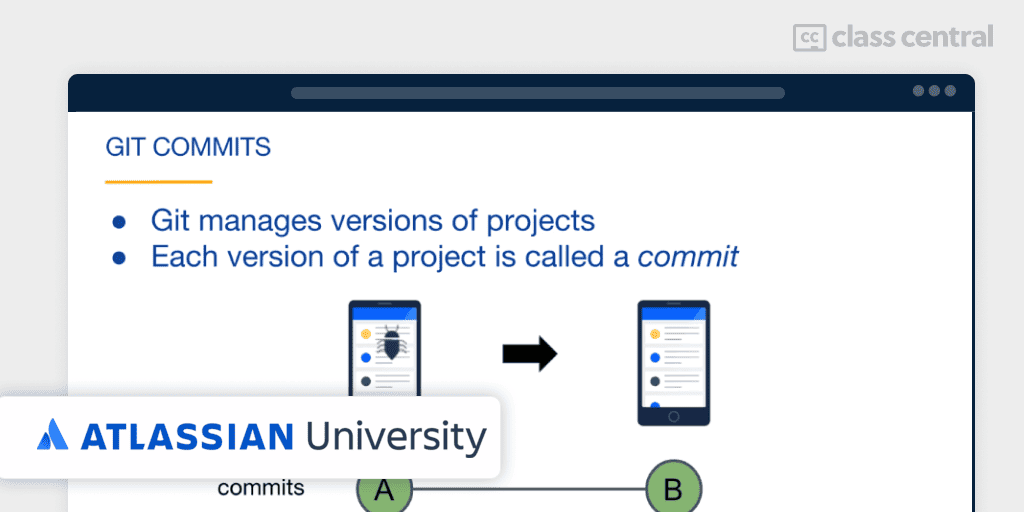
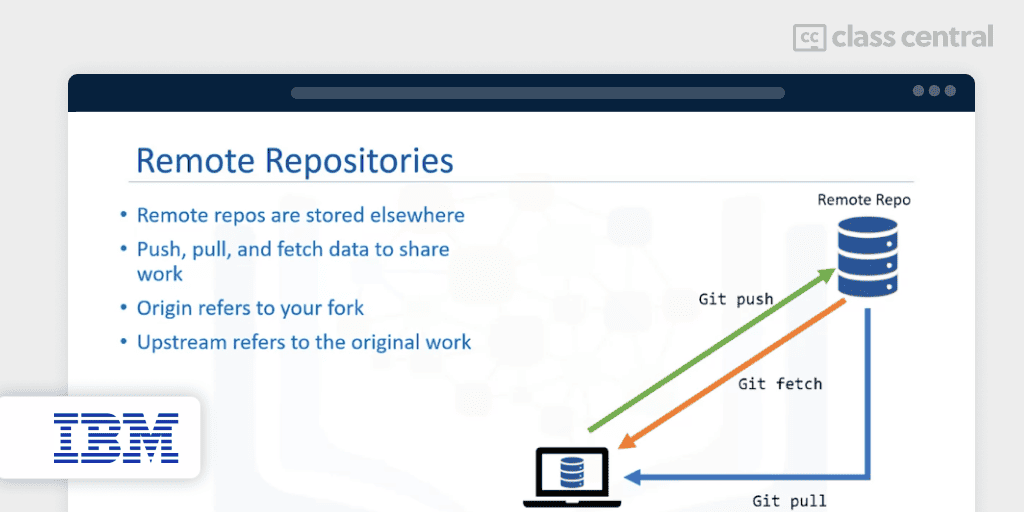
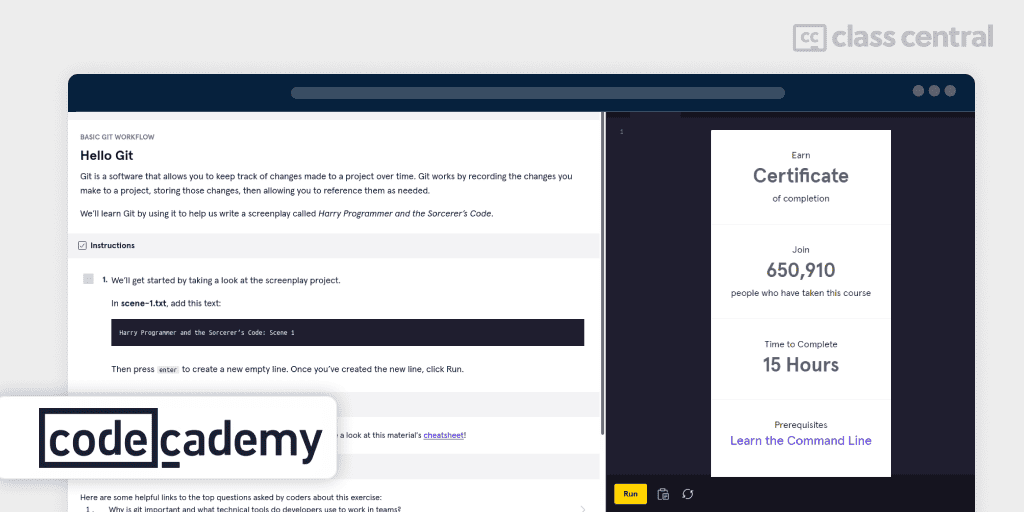
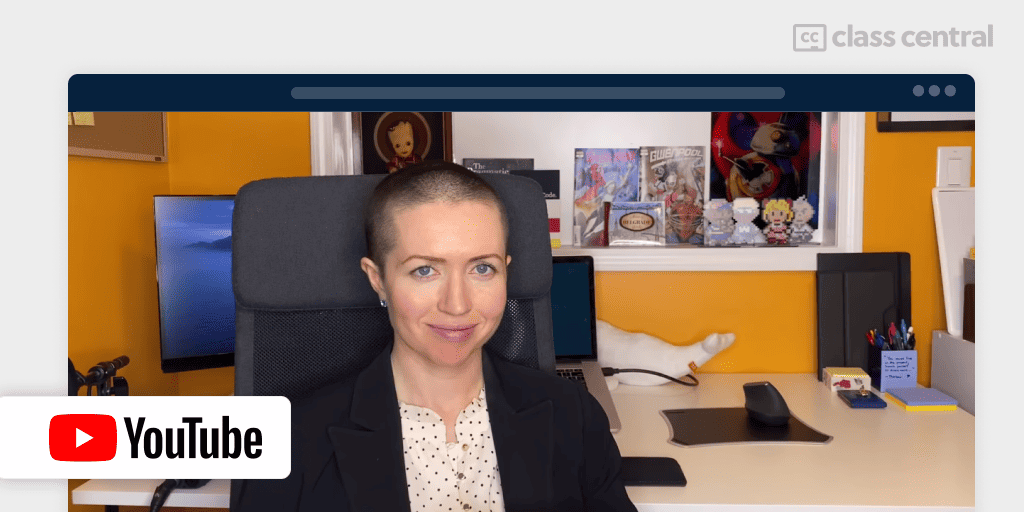
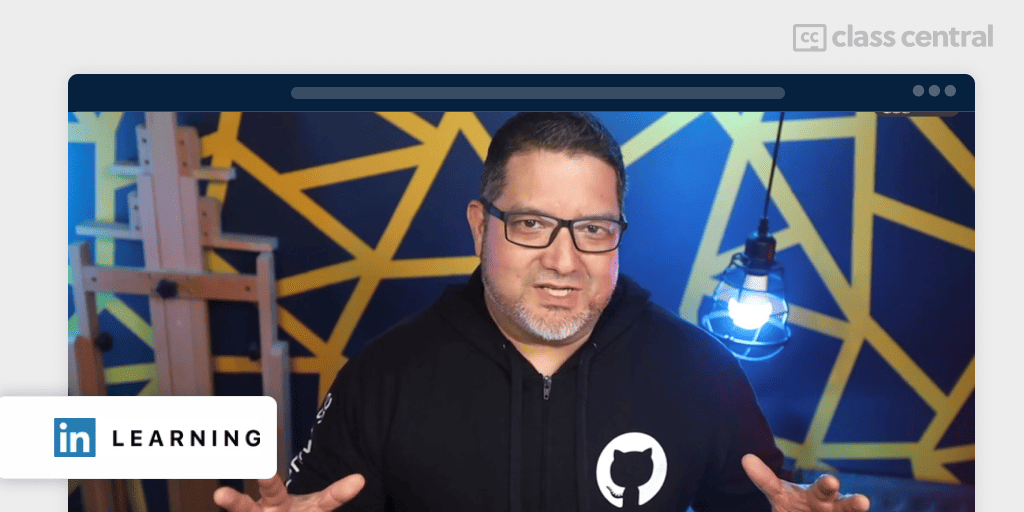
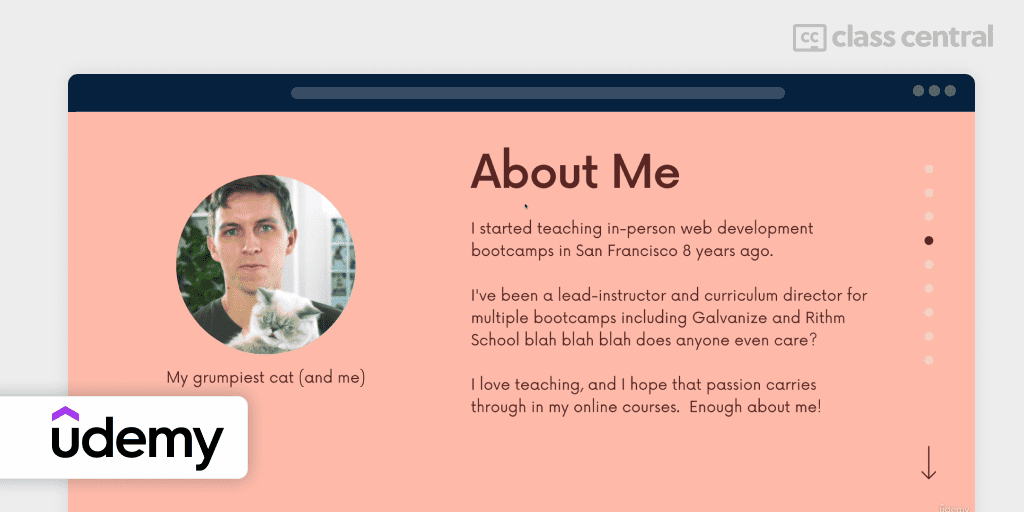







Jim
@Elham What about Github Desktop? Thanks.